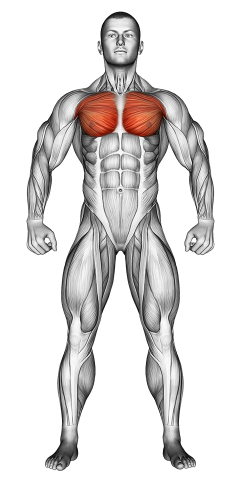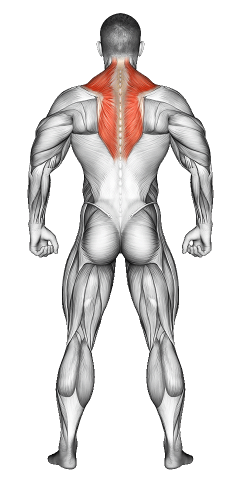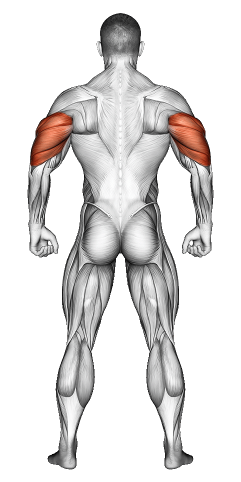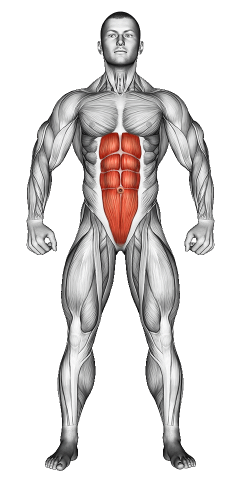Push Ups: Video Tutorial & Exercise Guide

Written By: Claude Michael
Updated: Oct 13, 2024
| Workout | Push Ups |
| Primary Muscle Group | Chest |
| Secondary Muscle Group | Shoulders, Triceps Abs |
| Equipment Required | Bodyweight |
| Force Type | Push |
| Mechanics | Compound |
| Exercise Type | Strength |
| Difficulty | Beginner |
Push Ups: Video Tutorial & Exercise Guide
Push-Up: Step-by-Step Guide
- Step 1: Begin in a high plank position with your hands placed slightly wider than shoulder-width apart, your body in a straight line from head to heels, and your feet about hip-width apart. Keep your core engaged and your back flat.
- Step 2: Lower your body by bending your elbows, keeping them at a 45-degree angle to your body. Lower your chest until it’s just above the ground or until your arms form a 90-degree angle.
- Step 3: Push through your palms to extend your arms and raise your body back to the starting position. Focus on keeping your core tight and your body in a straight line.
- Step 4: Repeat for the desired number of reps, ensuring that your body remains in a straight line and you control the movement both on the way down and up.
Push-Up: Overview
The Push-Up is a classic bodyweight exercise that targets the chest, shoulders, triceps, and core. It’s an effective movement for building upper body strength and muscular endurance. Push-ups can be done virtually anywhere without any equipment, making them a versatile addition to any workout routine.
The push-up’s simplicity and versatility make it suitable for individuals at all fitness levels. Variations can be made to increase or decrease difficulty, allowing it to be adjusted to your fitness level and goals.
Push-Up: Benefits
Push-ups are excellent for building upper body strength, particularly in the chest, shoulders, and triceps. They also engage the core, promoting better stability and overall body control. Because push-ups are a bodyweight exercise, they can be performed anywhere, making them convenient for home workouts or travel.
Push-ups improve endurance and muscular stamina and can help enhance performance in other pressing movements such as the bench press or overhead press.
Push-Up: Pro Tips & Advanced Techniques
Keep your body in a straight line throughout the entire movement to avoid sagging hips or arching your back. Focus on slow, controlled reps to maximize muscle activation. To increase difficulty, you can elevate your feet, add a weighted vest, or try different push-up variations like diamond or plyometric push-ups. For a simpler version, perform push-ups on your knees or against a wall.
Push-Up: Progression Plan
Beginner
Intermediate
Advanced
Push-Ups: Frequently Asked Questions (FAQs)
What muscles do Push-Ups target?
+Push-Ups primarily target the chest, shoulders, and triceps, with secondary engagement of the core and lower back to maintain stability.
How can I make Push-Ups easier?
+To make the exercise easier, perform push-ups on your knees or against an elevated surface such as a bench or wall to reduce the load on your upper body.
How do I increase the difficulty of Push-Ups?
+Increase difficulty by elevating your feet on a bench, adding a weighted vest, or performing plyometric push-ups for explosive strength. You can also try diamond or wide-grip push-ups to target different muscles.
How often should I do Push-Ups?
+Incorporate Push-Ups 1-3 times per week as part of your upper-body or full-body workout routine. They can be paired with other pressing exercises for balanced chest and shoulder development.
What common mistakes should I avoid?
+Avoid letting your hips sag or your back arch during the movement. Focus on keeping a straight line from head to heels, engaging your core, and maintaining proper form to prevent injury and maximize results.
Share
Don’t Wish for It, Work for It – Join the FlexXP Newsletter Today!
Thank you for signing up for the FlexXP Newsletter!
This site is protected and the Google Privacy Policy and Terms of Service apply.



